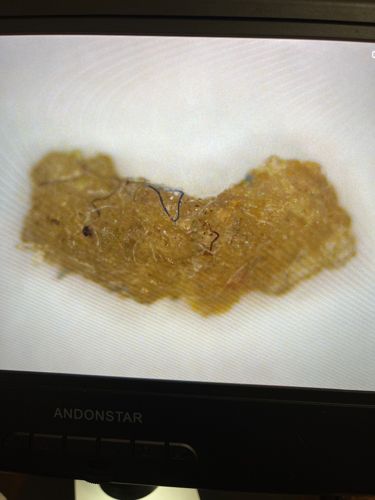Case-bearing Clothes Moth (larva)
Scientific Name: Tinea pellionella
Order & Family: Lepidoptera, Tineidae
Size: Larvae grow up to 10-12 mm in length; adult moths have a wingspan of 9-16 mm.

Natural Habitat
Indoors, especially in dark, undisturbed areas like closets, attics, and storage containers. They prefer natural fibers.
Diet & Feeding
Keratin-containing materials, including wool, silk, fur, feathers, felt, and sometimes blends with synthetic fibers if natural fibers are present. They also feed on pet hair, dust, and lint.
Behavior Patterns
The larva constructs a silken case, often incorporating bits of the material it is feeding on, which it carries with it as it moves and feeds. It can retreat entirely into this case for protection. Adults are poor fliers and prefer to run or hop, often found in dark corners or draped materials.
Risks & Benefits
Risks: Significant pest of textiles, clothing, carpets, and upholstered furniture, causing damage to valuable items made of natural fibers. They do not pose health risks to humans directly. Benefits: None in a household pest context. In nature, they contribute to decomposition of animal remains.
Identified on: 9/25/2025